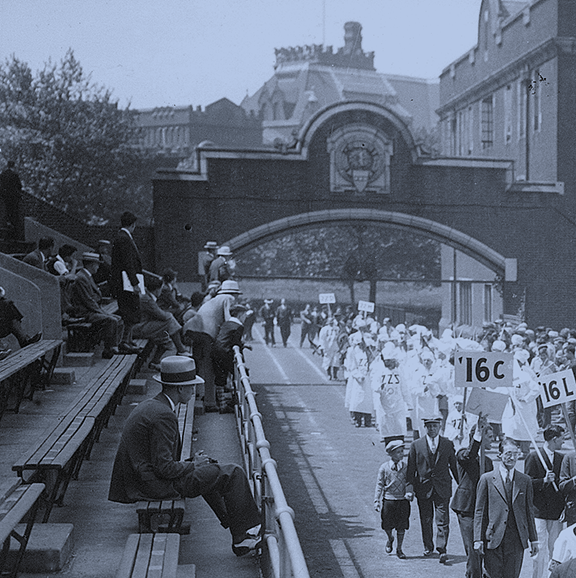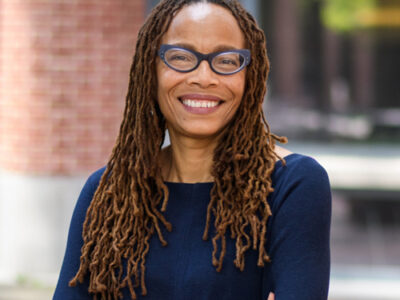Pushing the “frontiers of thought”
By D. S. Neil Van Leeuwen C’00
On July 23, 2002, a great writer died. Chaim Potok was internationally known for works that gave readers of all backgrounds an intimate look at Judaism, as well as a look back at the world from a Jewish perspective. When I was a child, I first saw the movie version of “The Chosen” and was captivated by how two different groups of people, Modern Orthodox Jews and Hasidic Jews, both of a religion distinct from my own, could have such divergent ways of seeing reality and the transformational events at the end of World War II. In that story, two traditions and their corresponding worldviews are starkly juxtaposed and brought together through the friendship of Danny Saunders, a Hasid, and Reuven Malter, a Modern Orthodox Jew. Telling stories, however, was not the only thing Potok did in his fruitful lifetime to juxtapose worldviews; he also taught a seminar on Postmodernism at Penn from 1993 through 2001.
Potok is rightly known for his skills as a writer, but his efficacy in the classroom deserves equal recognition. One fellow student told me upon hearing of Potok’s death, “[He] forced me to think and think and think.” Every one of us from the fall of 1999, the year I took his seminar, saw the world a little—or a lot—differently afterward. For this reason, I want share with the wider Penn community what I can about the great gift Potok gave our university, his teaching.
Potok was a bald man of medium stature with a long gray beard and shiny glasses. He listened seriously to his students and prodded them into further thought with laconic answers to their questions. Clad in a tweed sports coat with a shirt buttoned to the top and no tie, he was intimidating at first and often made cryptic statements that only began to make sense by the end of the semester, such as “never trust the written word.” On the first day, Potok solemnly announced the full name of the seminar: “In Search of the Modern and Postmodern Self.” His goal was to take us on a “journey” from Modernism to Postmodernism, exploring how the Self, or person, fits in to the various systems of thought that it is confronted with.
After Potok’s brief introduction, each of the 17 of us in the fourth floor Van Pelt Library seminar room told his or her name and area of study. To every area mentioned, Potok instantly responded with a gruff “What?” This question was meant to push us into further detail about what specifically we studied, so that he could use our individual areas of expertise in applying postmodern thought to diverse fields. After each answer, Potok gazed intently at us and nodded silently in contemplation, as if to show approval at the range of majors represented—English, biology, philosophy, physics, classics, even finance. We were all surprised at how explicit this bearded stranger was asking us to be; this was not a class in which we could hide our thoughts under a rock.
Potok was even bold enough to ask one of us that day to give a brief overview of Western intellectual history. The perplexed student started with Augustine, skipped to the Reformation, and then fell silent at the enormity of the task. Potok, however—who was not one to waste learning time—unflinchingly used this exchange as a prelude to his own sweeping intellectual history, which divided thought into Premodern, Modern, and Postmodern time periods. History was important, for only by understanding the past can we find significance in the present. His account, delivered methodically, was a captivating map to the whole course.
Potok’s gravelly voice painted the history of Western thought in broad brushstrokes. The Premodern was characterized by the “vertical world” picture, in which sources of value and Truth were arranged hierarchically, with God on top, the Church below, man in the middle, and Satan and evil on bottom. During Modernity, this vertical world turned horizontal: since God and revelation were no longer absolute sources of Truth, reason and science progressively took over as keys to a more objective, comprehensive, universal “Truth.” So what is “Postmodernism”? In Potok’s view, the underlying idea is that individuals and cultures use the ideas of their time and place as a “map” (his favorite word) for making sense of their experiences. Because of divergent worldviews, different peoples construct reality differently. Postmodernism is characterized by the awareness that society and culture are pervaded by different thought systems for mapping out aspects of reality—art, history, literature, and science, to name a few—and that no system has an absolute claim to be right or “true.” Potok’s unifying question was, “How do we understand the idea of a person or Self against the background of diverse ways of thinking?”
At first glance, the books on our reading list had little to do with one another, but they assumed a deep coherence when read with an understanding of Potok’s goals and view of intellectual history. We read Freud’s work, for example, as a modern “map” of the Self, with all its dark and murky corners: the instinctive, animalistic id; the balancing ego; and the super-ego, full of guilt and conscience. Works of Dostoevsky, Kafka, and Woolf then presented us with portraits of the Self inside the turmoil of a modern, mechanistic world.
The most important reading was The Structure of Scientific Revolutions, a map of the history of science that shook our expectations. In it, Thomas Kuhn argues that the march of science is not straightforward progress toward objective Truth, but a series of ever-changing, incommensurable paradigms (read “maps”). Modern chemistry, for example, is not a set of facts simply added to Medieval alchemy, but rather a new system of thought that obliterates the old. According to Potok, Kuhn’s work was postmodern par excellence. Other readings from such thinkers as Derrida and Foucault impressed on us the idea that persons might not be relating to the world and reality itself, but rather to constructions of reality that find their expression in the shifty medium of language.
As the semester progressed, the seminar evolved from its initial lecture format into an interaction between the students, Potok, and the texts. We focused on passages read aloud, discussing them in depth, just as seminary students might approach the Talmud under the guidance of a meticulous rabbi. Many of the ideas I took from the class were never explicitly stated by Potok himself; the picture (or map) rather arose out of the discussion he incited among us, his interdisciplinary group of students.
Potok loved discussion. He loved it so much that he invited us all to his house in Merion one Sunday morning for a chat over bagels and coffee on issues related to the course. He lived with his wife in a large Tudor across from a school soccer field. What amazed me on entering was that Potok’s own paintings adorned the walls. This famous novelist-rabbi with a PhD in philosophy could paint, too! His works were oils on canvas, with dates mostly from the mid-to-late ‘70s. They had bright colors and the interesting quality of being simultaneously abstract andrepresentational. In his living room, we discussed extensively the effects of Modernism and Postmodernism on art and architecture—ranging from Duchamps’ “The Fountain” to the Georges Pompidou Center in Paris. It was at this point, late in the semester, that Potok’s formerly stern face broke into a subtly warm smile that radiated through his thick beard. Afterward, I rode the train back to 30th Street Station, feeling both honored and glad for what I had experienced.
You may be surprised that none of Potok’s own literature played a role in his class. Indeed, we read none of his writings. It may fruitfully be asked, therefore, “What, if anything, do this deep thinker’s ideas about Postmodernism have to do with his extensive and engaging literature?” He didn’t talk about this much, but he did give a hint one day in a statement that I excitedly copied down: “That’s what all my books are about, individuals who come up against other constructions of the world.” I interpret this as follows: Potok was sketching in abstract in class what he painted in fine detail in novels. The Chosen is about two young men who confront one another with distinct ways of giving meaning to reality. Each Self in the story looks at the world through a different lens. Similarly, Potok’s course forced us to see the very idea of the Self against the background of several wholly distinct worldviews that have confronted it in history.
Many students felt changed by what they learned. One student, now an activist for communal harmony in India, is struck by how her work is influenced by the conception of the Self and “the other” that she took from Potok’s course. A biology student even said it had revolutionized how she understood science. In retrospect, most of us can probably sympathize with the radical change in outlook that Potok’s character Reuven Malter eloquently puts into words: “I felt I had crossed into another world, that little pieces of my old self had been left behind on the black asphalt floor of the school yard alongside the shattered lens of my glasses.” A great teacher, with patience, can push students to see things differently; I am still realizing the full effect that his course had on me three years later. On the last day of class in our Van Pelt seminar room, Potok gave a synopsis of the whole semester, and as he spoke, the drumline of the Penn Band marched past, down Locust Walk, playing the rhythms of its cadence faintly in the background. Those rhythms provided a strangely appropriate backdrop to the words with which the course, the journey, ended, “And that is where I have left you, on the frontiers of thought.”
Chaim Potok, we, your students, will all miss you dearly.
D.S. Neil Van Leeuwen is a graduate student in philosophy at Stanford University.



